
International Journal of Engineering and Geosciences
Scope & Guideline
Exploring the synergy between technology and the Earth.
Introduction
Aims and Scopes
- Geospatial Technologies and GIS:
The journal predominantly publishes research related to Geographic Information Systems (GIS), emphasizing spatial analysis, mapping, and decision-making processes in various applications such as urban planning, environmental monitoring, and resource management. - Remote Sensing Applications:
A significant portion of the journal's content involves remote sensing techniques for environmental assessment, land use classification, and natural resource management, utilizing data from satellite imagery and aerial surveys. - Sustainable Development and Environmental Studies:
The journal addresses themes of sustainability in engineering and geosciences, focusing on studies that promote sustainable practices and the assessment of environmental impacts related to urbanization, agriculture, and natural resource exploitation. - Disaster Management and Risk Assessment:
Research on multi-hazard risk assessment and disaster management strategies is a core area, particularly studies that utilize GIS and remote sensing technologies to mitigate risks associated with natural disasters. - Urban Studies and Infrastructure Development:
The journal includes research on urbanization processes, infrastructure development, and their environmental implications, often employing spatial modeling and analysis techniques.
Trending and Emerging
- Machine Learning and AI in Geosciences:
Recent publications have increasingly focused on the application of machine learning and artificial intelligence techniques for data analysis in geosciences, showcasing their potential in automating processes such as land cover classification and environmental monitoring. - UAV and Drone Technology:
The use of UAVs for data collection and analysis has emerged as a significant trend, with studies highlighting their applications in urban planning, environmental monitoring, and disaster management, driven by advancements in aerial imaging technologies. - Climate Change Impact Studies:
Research addressing the impacts of climate change on various ecosystems and urban areas has gained traction, emphasizing the need for adaptive strategies and resilience planning in the face of environmental changes. - Spatial Decision Support Systems:
There is an increasing focus on developing integrated spatial decision support systems that utilize GIS and remote sensing data to facilitate complex decision-making processes in urban and environmental management. - 3D Modeling and Visualization Techniques:
Emerging themes include the use of 3D modeling and visualization techniques for better understanding spatial phenomena, particularly in urban studies and environmental assessments, reflecting a trend towards more interactive and comprehensive data representation.
Declining or Waning
- Traditional Surveying Techniques:
There has been a noticeable decline in research focused on traditional surveying methods as the field increasingly embraces advanced technologies such as UAVs and LiDAR for spatial data collection and analysis. - Basic Environmental Monitoring:
Studies that merely monitor environmental parameters without advanced analytical methodologies or technologies have become less frequent, indicating a preference for more sophisticated approaches that incorporate machine learning and remote sensing. - Historical Geographical Studies:
Research centered on historical geographical analysis appears to be waning, as the journal shifts towards more dynamic and contemporary studies that address current environmental and urban challenges. - Conventional Land Use Planning:
There is a decreasing emphasis on conventional land use planning methodologies that do not integrate modern spatial analysis techniques, reflecting a broader trend towards innovative, data-driven approaches.
Similar Journals

EARTH
Connecting disciplines to address Earth's challenges.EARTH is a prestigious journal published by MDPI, located in Switzerland, with a commitment to advancing the fields of Earth and Planetary Sciences and Environmental Science. Launched in 2020, the journal emphasizes an open-access publication model, ensuring that high-quality research is widely accessible to the scientific community and beyond. As of 2023, it proudly holds a Q2 ranking in both the Environmental Science and Earth and Planetary Sciences categories, indicating its significant impact within these disciplines; it ranks #90 out of 219 and #70 out of 159 in their respective fields according to Scopus. With the convergence of multidisciplinary research and the critical challenges our planet faces, EARTH seeks to publish innovative studies that foster a deeper understanding of geological and environmental processes. Researchers, professionals, and students alike will find this journal an invaluable resource for the latest findings and discussions shaping our understanding of Earth sciences.
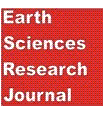
Earth Sciences Research Journal
Illuminating the Path to Earth’s PreservationThe Earth Sciences Research Journal, published by the UNIV NACIONAL DE COLOMBIA, serves as a pivotal platform for the dissemination of knowledge in the diverse field of Earth and Planetary Sciences since its inception. With an ISSN of 1794-6190 and an E-ISSN of 2339-3459, this Open Access journal has been committed to providing unrestricted access to high-quality research since 2004. Located in Bogotá, Colombia, it has gained recognition within the academic community, achieving a Q3 quartile ranking in Earth and Planetary Sciences and notable Scopus rankings, which further underscores its relevance and reach. Its scope encompasses varied research topics, making it an essential resource for researchers, professionals, and students alike, seeking to contribute to or stay informed on the latest developments in the Earth sciences up to the year 2024. The journal not only anticipates cutting-edge research but also emphasizes collaborative dialogues among global experts, driving forward the conversation on critical issues facing our planet.
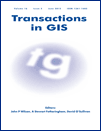
Transactions in GIS
Elevating Geographic Scholarship to New HeightsTransactions in GIS is a premier academic journal published by WILEY, dedicated to advancing the field of Geographic Information Science (GIS). With an ISSN of 1361-1682 and an E-ISSN of 1467-9671, this journal has continually contributed valuable insights since its inception in 1996, transforming the landscape of GIS research and application. Covering a broad scope within Earth and Planetary Sciences, it holds a notable Q2 ranking and stands in the 74th percentile among its peers as per Scopus rankings. The journal serves as a critical platform for researchers, professionals, and students who seek to disseminate and engage with innovative GIS methodologies, applications, and theoretical advancements. With a commitment to quality and rigor, Transactions in GIS remains a vital resource for those at the forefront of geographic research and analysis.
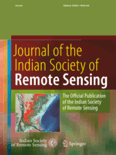
Journal of the Indian Society of Remote Sensing
Connecting Scholars to the Frontiers of Remote SensingJournal of the Indian Society of Remote Sensing, published by SPRINGER, stands as a prominent contribution to the fields of Earth and Planetary Sciences and Geography, Planning and Development. With an ISSN of 0255-660X and an E-ISSN of 0974-3006, this esteemed journal has been in circulation since 1973, showcasing a rich repository of research and advancements in remote sensing applications, methodologies, and technologies, specifically within the Indian context and beyond. The journal's impact is underscored by its placement in the Q2 category of both Earth and Planetary Sciences and Geography as of 2023, ranking impressively in the Scopus database with significant percentiles. With the intent to bridge the gap between theory and practical application, it invites scholars, researchers, and professionals to contribute innovative studies that enhance our understanding of remote sensing and its implications in various domains. The Journal of the Indian Society of Remote Sensing is a vital resource for anyone looking to remain at the forefront of research in this dynamic field.

Geo-Spatial Information Science
Bridging Technology and Application in Earth SciencesGeo-Spatial Information Science, published by TAYLOR & FRANCIS LTD, is a premier open-access journal that has been at the forefront of disseminating cutting-edge research since its inception in 1998. With an ISSN of 1009-5020 and an E-ISSN of 1993-5153, this journal plays a pivotal role in the fields of Computers in Earth Sciences and Geography, Planning and Development, achieving a prestigious Q1 ranking in both categories as of 2023. Its exemplary Scopus rankings highlight its relevance within the social sciences and earth sciences, placing it among the top echelons of its field, with a 95th and 93rd percentile respectively. The journal aims to bridge the gap between innovative geospatial technologies and their applications in real-world scenarios, fostering interdisciplinary collaboration and advancing the global understanding of spatial data analysis. Based in the United Kingdom, Geo-Spatial Information Science invites researchers, professionals, and students to contribute and access research that shapes the future of geo-spatial sciences, all while adhering to open access principles that ensure broad dissemination and engagement with the broader academic community.

Journal of Geovisualization and Spatial Analysis
Exploring the Intersection of Geography and InnovationJournal of Geovisualization and Spatial Analysis, published by SpringerNature, is an influential open-access journal specializing in the cutting-edge fields of geovisualization, spatial analysis, and their application in earth sciences and geography. Since its inception in 2017, this journal has established a prominent stance with a high impact factor and prestigious Q1 rankings across multiple categories, including Computers in Earth Sciences, Earth and Planetary Sciences (miscellaneous), and Geography, Planning and Development. The editorial board is committed to advancing innovative research and methodologies, providing a platform for scholars to disseminate their findings globally. With impressive Scopus rankings—placing it in the top percentiles among its peers—the journal serves as a vital resource for researchers, professionals, and students keen on understanding spatial data and its implications for geographic science. Its emphasis on rigorous peer review and rapid publication enhances accessibility to substantive research, thus fostering knowledge sharing within the scientific community. Based in Switzerland, the journal promotes a collaborative environment for interdisciplinary studies, making it an essential read for anyone involved in spatial analysis research.

Ecological Indicators
Exploring vital indicators for a healthier planet.Ecological Indicators, published by Elsevier, is a prestigious journal dedicated to advancing the fields of ecology and environmental science. With an impressive impact factor and ranked in the Q1 quartile for both Ecology and Decision Sciences categories, the journal serves as a vital resource for researchers and professionals aiming to apply ecological knowledge to real-world problems. The journal covers a broad scope of topics within ecological indicators, aiming to provide comprehensive insights into biodiversity, ecosystem health, and sustainability metrics. Founded in 2001 and continuing through 2024, Ecological Indicators has established itself as a leader in disseminating significant research and innovative findings. The journal's standing is reflected in its remarkable Scopus ranks, placing it among the top percentile in its respective categories. Authors are encouraged to submit their work to share vital findings with an engaged audience of researchers, professionals, and dedicated students, ensuring the continued relevance and impact of ecological research on global environmental policies and practices.
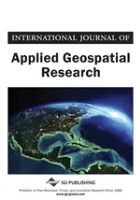
International Journal of Applied Geospatial Research
Unveiling the potential of geospatial applications for informed decision-making.International Journal of Applied Geospatial Research is an esteemed publication dedicated to advancing the field of geospatial research. Published by IGI Global, this journal provides a platform for innovative studies from 2010 to 2024 that encourage multidisciplinary contributions across Earth and planetary sciences and geography. While currently not offering open access, the journal's focus on applied research ensures that it remains highly relevant to both academics and industry professionals alike. With an ISSN of 1947-9654 and an E-ISSN of 1947-9662, it has been indexed in various databases, reflecting its emerging significance with rankings such as Q4 in Earth and Planetary Sciences and Geography according to Scopus, placing it at the intersection of critical research and practical application. Researchers, professionals, and students can expect insightful articles that enhance understanding and drive innovation in geospatial applications essential for informed decision-making in a rapidly changing world.
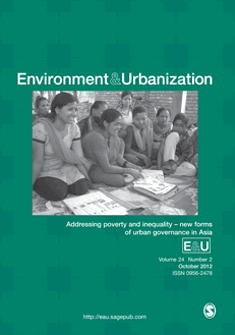
ENVIRONMENT AND URBANIZATION
Transforming urban challenges into sustainable opportunities.Environment and Urbanization is a leading interdisciplinary journal published by SAGE Publications Ltd, dedicated to advancing knowledge in the fields of Environmental Science and Urban Studies. With a strong focus on the interactions between urban environments and ecological systems, this journal has established itself as a pivotal resource for researchers, professionals, and students interested in sustainable urban development and environmental management. Since its inception in 1989, Environment and Urbanization has continually provided high-quality, peer-reviewed articles that foster a deeper understanding of contemporary urban challenges, making it a highly cited publication with an impressive impact factor. As evidenced by its Q1 ranking in both Environmental Science (miscellaneous) and Urban Studies for 2023, the journal stands at the forefront of research, boasting notable Scopus rankings in its fields. By remaining committed to publishing cutting-edge research, the journal aims to influence policy and practice across the globe, ultimately aiding in the creation of more resilient and livable urban areas.

Mathematical Geosciences
Connecting Theory and Application in Earth and MathematicsMathematical Geosciences, published by Springer Heidelberg, is a leading academic journal that serves as a vital platform for interdisciplinary research at the intersection of mathematics and geosciences. With an ISSN of 1874-8961 and an E-ISSN of 1874-8953, this journal offers open access options, ensuring broad and unrestricted access to its valuable content. Operating from Germany, it has established itself prominently in the global research community, achieving a Q2 ranking in both Earth and Planetary Sciences and Mathematics categories as of 2023. The journal spans a comprehensive timeline of research from 2008 to 2024 and features contributions aimed at advancing theoretical and applied mathematical methods to solve complex problems in the geosciences. With impressive Scopus ranks, including top tier positions in multiple categories, Mathematical Geosciences is essential for researchers, professionals, and students seeking innovative insights and methodologies that address pressing challenges in the Earth's systems and mathematical modeling.